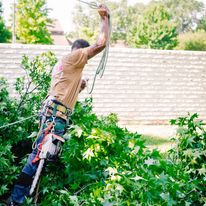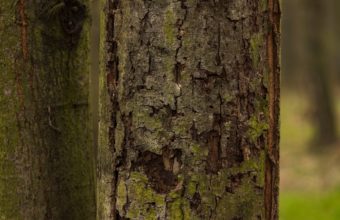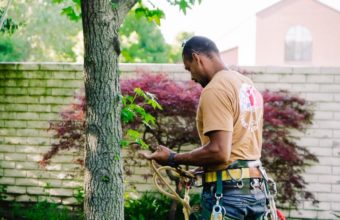When pruning a tree, it’s important to have specific objectives in mind and to selectively choose which branches to prune.
Here are some general guidelines on which branches to consider pruning…
- Dead or Diseased Branches – Prune any dead or diseased branches first. These branches can be identified by their lack of foliage, discoloration, or other signs of poor health. Removing them helps prevent the spread of disease and promotes overall tree health.
- Crossing or Rubbing Branches – Remove branches that are crossing each other or rubbing against each other. This helps prevent damage to the bark, reduces the risk of disease entry points, and improves the tree’s structure.
- Water Sprouts or Suckers – Water sprouts are vigorous, vertical shoots that often grow in response to stress, such as topping or severe pruning. Suckers are similar shoots emerging from the base of the tree. Remove excessive water sprouts or suckers to maintain a well-balanced and healthy tree structure.
- Weak or V-Shaped Crotches – Evaluate the angle between branches at their point of attachment to the trunk. Weak, narrow, or V-shaped crotches can be structurally unsound and more prone to breakage. Consider removing or reducing these branches to prevent potential hazards.
- Overlapping Branches – If branches overlap excessively, consider pruning to improve air circulation and reduce the risk of disease. Proper spacing between branches allows for better sunlight penetration and overall tree health.
- Low-Hanging Branches – Prune low-hanging branches if they pose a hazard or obstruction. This is especially important for trees near buildings, walkways, or driveways.
- Selective Thinning – In densely branched trees, selectively thin out some branches to reduce density and improve light penetration. This can be particularly beneficial for promoting air circulation and reducing wind resistance.
- Improve Overall Tree Structure – Assess the overall structure of the tree and prune to enhance its form. This may involve removing branches that disrupt the natural shape or balance of the tree.
- Reduce Size (Crown Reduction) – If necessary, selectively reduce the length of long branches to control the tree’s size. Follow proper pruning techniques to minimize stress and promote healing.
Always use proper pruning techniques, making cuts just outside the branch collar to promote faster healing. Avoid removing more than 25-30% of the tree’s foliage in a single pruning session to minimize stress. If you are uncertain about which branches to prune or need to perform significant pruning, consider consulting with a certified arborist or tree care professional for guidance tailored to the specific needs of the tree.






